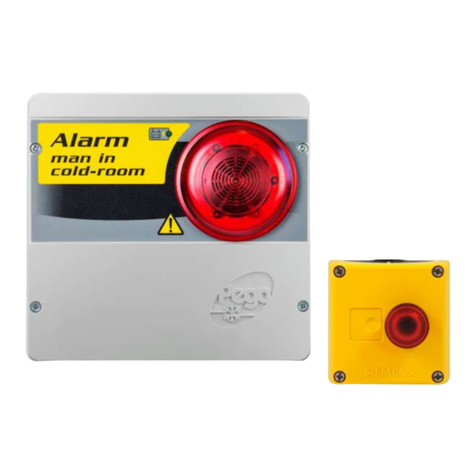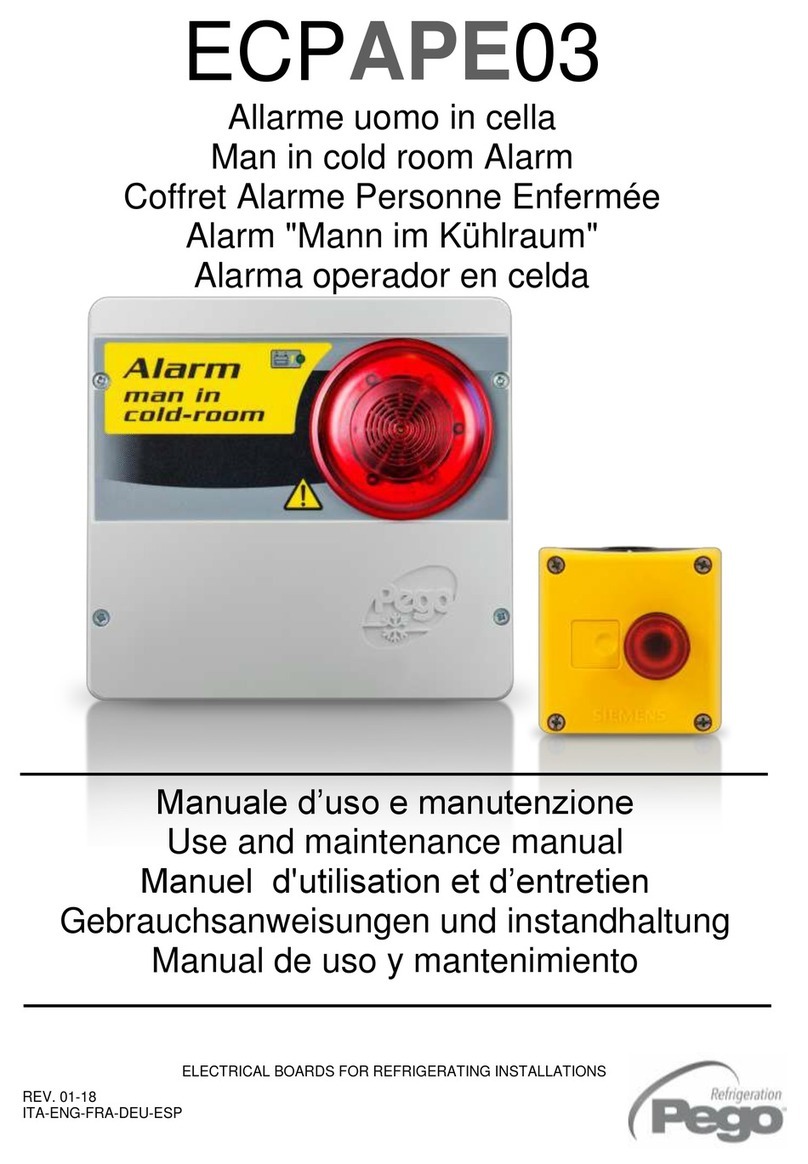
TTLAPE03
Pag. 4 Rev. 2-09
COMPONENTI DEL KIT ALLARME UOMO IN CELLA
Il KIT ALLARME UOMO IN CELLA è costituito da:
- Centralina di gestione allarme visivo acustico completa di batteria tampone.
- N° 3 guarnizioni di tenuta, da interporre tra la vite di fissaggio ed il fondo scatola.
- Pulsante luminoso di emergenza interno cella.
- Manuale d’uso e manutenzione.
CODICE IDENTIFICAZIONE PRODOTTI
TTLAPE03 kit completo di segnalazione acustico
luminosa per emergenza uomo in cella.
. CARATTERISTICHE TECNICHE
Alimentazione principale 230 Vac 50 Hz
Consumo max su alim. principale 20 mA
Batteria tampone 12 VDC Ni-MH 1300 mAh
Tempo di ricarica completo: 110 h
Autonomia di funzionamento - Con alimentazione 230Vac NON presente
(funzionamento con Batteria tampone carica) : 14 h Circa
- Con alimentazione 230Vac presente: illimitato
Modulo esterno cella Grado di protezione IP 43
Temperatura di funzionamento: -5 ÷+45 °C
Caratteristiche acustiche
Tipo: piezoelettrico
Potenza sonora: 90 dB a 1m
Segnalazione visiva A LED lampeggiante rosso 12 Vdc
Pulsante di emergenza interno cella Illuminazione: LED rosso 12 Vdc
Contatto NC
Pulsantiera con grado di protezione IP65
Temperatura di funzionamento: -25 ÷+70 °C
Relè ausiliario 8A AC1 (Il contatto chiude con allarme inserito)
CAPITOLO 1 : INTRODUZIONE
CAP. 1 - Introduzion
- ITA -
MANUALE D’USO E MANUTENZIONE






























